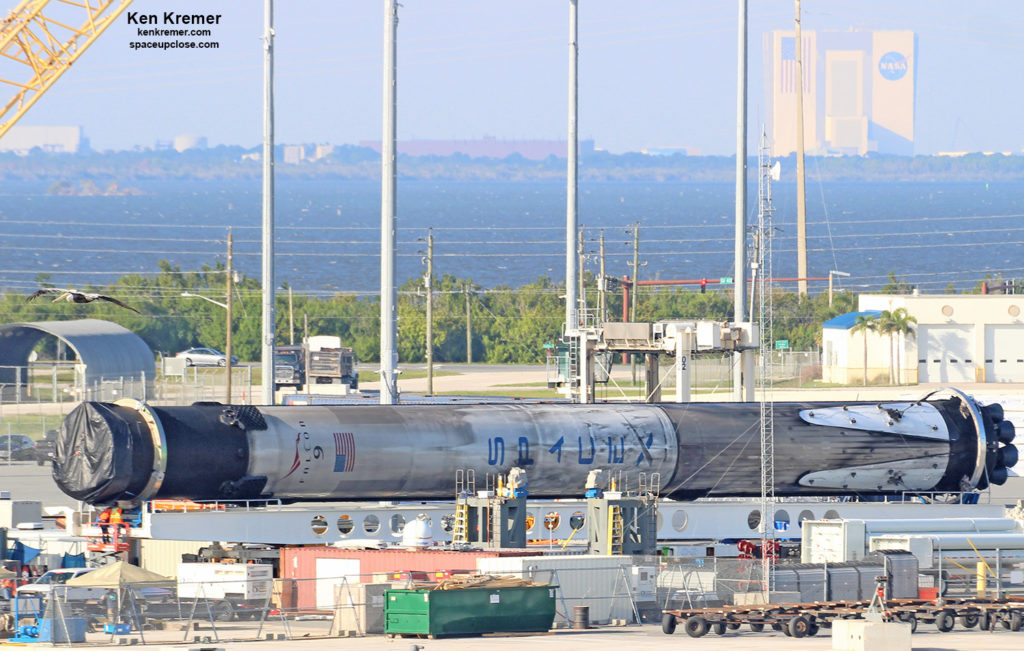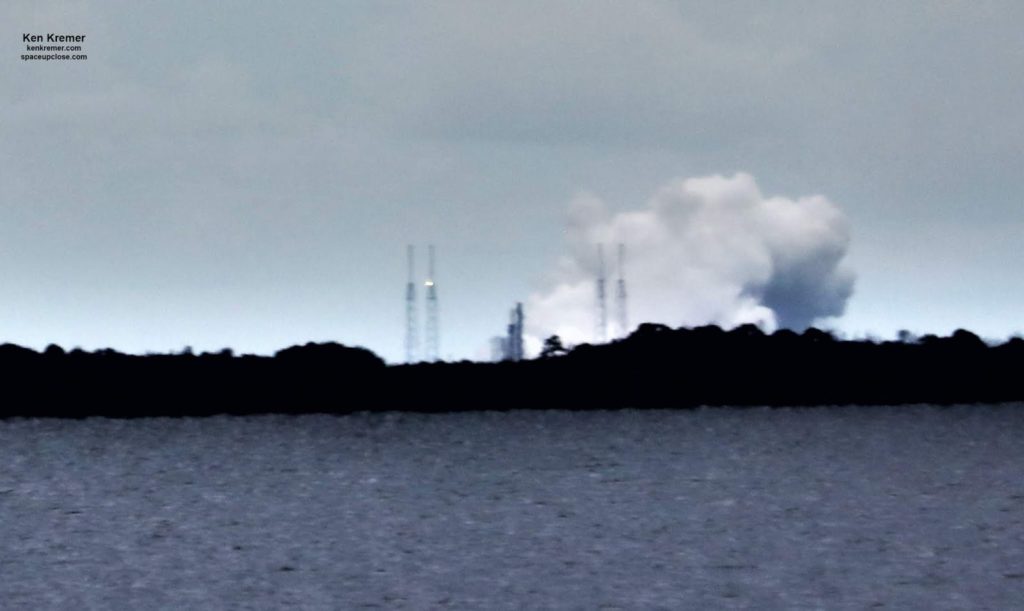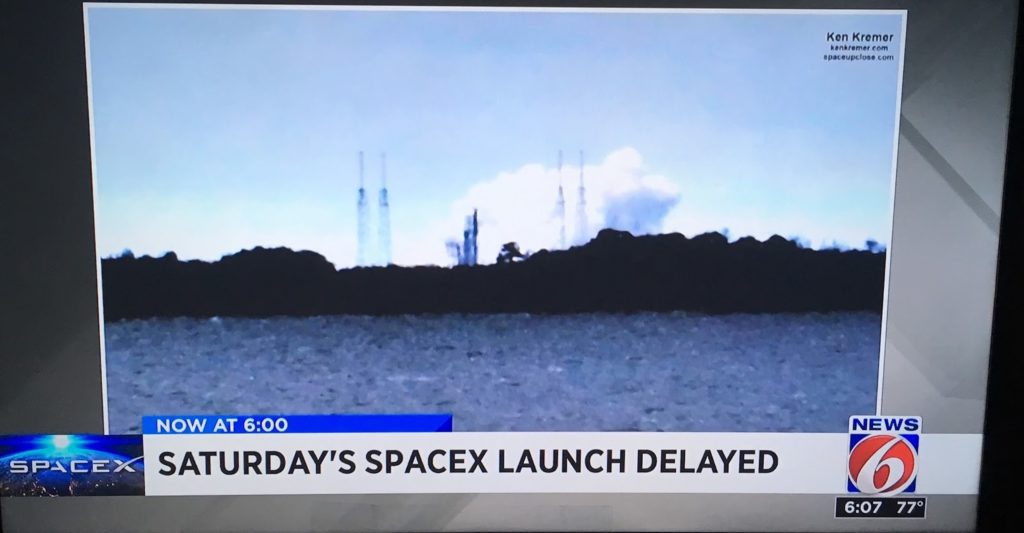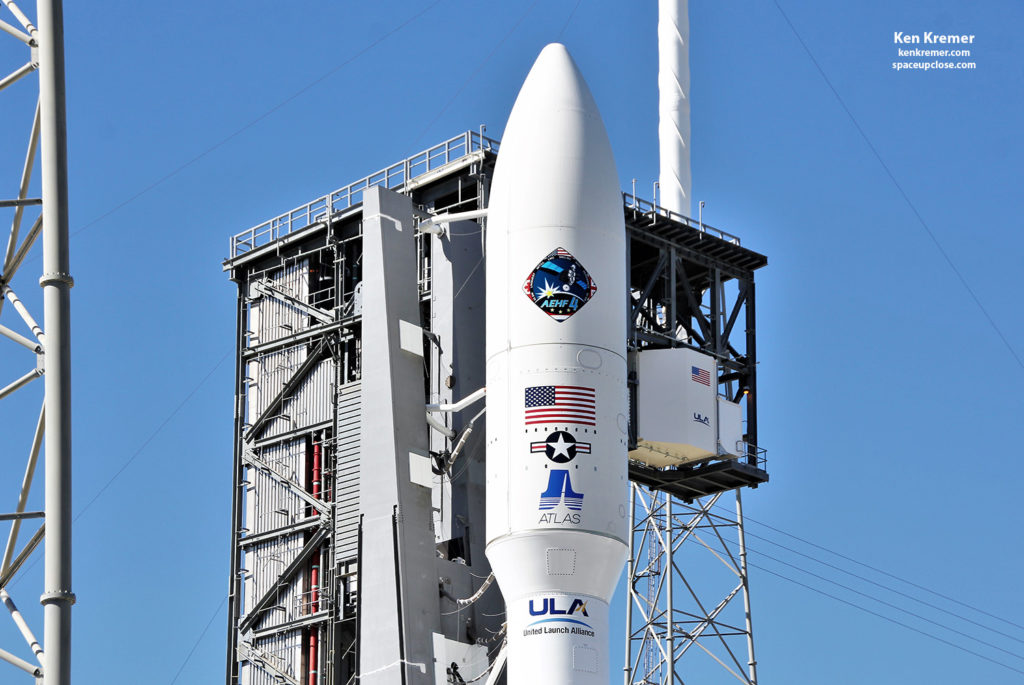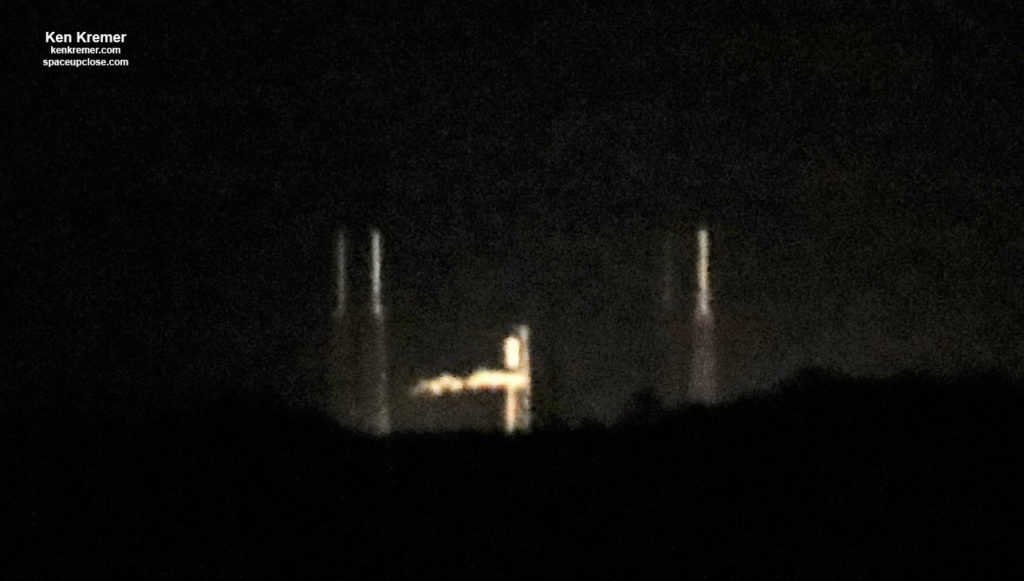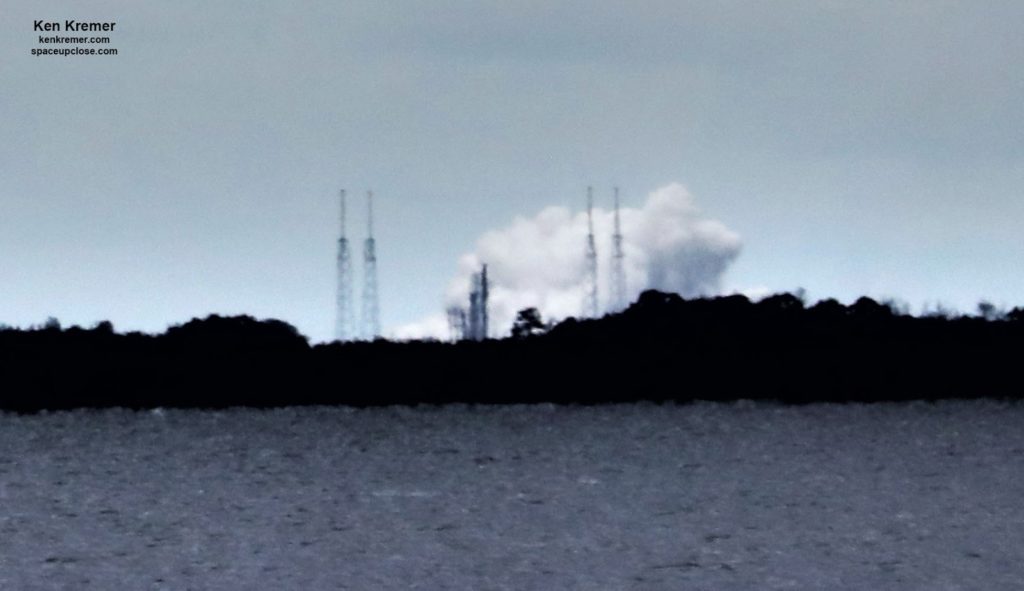TITUSVILLE, FL – Two launches from Florida’s Space Coast are on tap this week from SpaceX and ULA to start off the first full week of August with rockets galore. But the exact dates and blastoff sequence from Cape Canaveral are TBD as of today, Aug. 4, and the weather outlook is iffy too! Basically – its
complicated.
As of this moment Sunday evening, Aug. 4 the back to back launch lineup could be Aug. 6 for the commercial SpaceX Falcon 9 launch of the AMOS-17 comsat for Spacecom of Israel – and Aug. 8 for a U.S. National Security mission on a ULA Atlas V launch of the AEHF-5 nuclear hardened relay
comsat for the U.S. Air Force.
Because the launches are now potentially so closely spaced just some 36 hours apart from adjacent launch pads on Cape Canaveral Air Force Station in Florida, the U.S. Air Force Space Command will
decide who gets top priority on the Air Force Eastern Range.
This uncommon circumstance all comes about following completion of an uncommon 2nd
static fire test late last night by SpaceX on their recycled Falcon 9 – after which SpaceX requested an Aug. 6 launch date from the Air Force (that is not yet approved) while ULA already had the Aug. 8 launch
date approved several weeks ago.
Uncertainty reigns for the rocket competitor’s duo due to slips in SpaceX’s Falcon 9 launch of the AMOS-17 telecommunications satellite resulting from technical issues with their Falcon 9 booster following the 1st static fire conducted several days ago Wednesday evening, July 31. See our static fire story and photos here.
SpaceX had planned to launch AMOS-17 yesterday, Saturday, Aug. 3, but ran into difficulties following that first static fire test and subsequently reported that engineers needed to replace a balky valve – in order to confirm that the rocket was really ready to launch successfully.
Thus SpaceX management delayed the Aug 3 launch and ordered a second hold down static fire test involving a mock countdown, propellant loading and brief ignition of all nine first stage Merlin 1D engines.
But the 2nd engine test was apparently repeatedly delayed – for both weather and technical issues – and did not take place until 11:30 p.m. EDT Saturday night (0330 GMT Sunday).
In the meantime the SpaceX launch pad team had to lower the used rocket back to horizontal sometime Saturday morning – and attend to something – before raising it back vertical before 11 a.m. EDT as I observed and photographed about 13 miles away in Titusville.
At this time SpaceX is pending approval of the Aug. 6 launch from the Air Force Eastern Range.
“Static fire test of Falcon 9 complete—team is now working toward August 6 for launch of AMOS-17 from Pad 40 in Florida, pending Range availability,” SpaceX tweeted following the 2nd test fire.
If approved, SpaceX would launch their Falcon 9 carrying AMOS-17 during a window that opens at 6:52 p.m. EDT (2252 GMT) Tuesday, Aug. 6 and extends to 8:20 p.m. EDT (0020 GMT) from Space Launch
Complex 40 at Cape Canaveral Air Force Station in Florida.
Then ULA would follow with their Atlas V carrying AEHF-5 during a window that opens at 5:44 a.m. EDT (0944 GMT) EDT Thursday, Aug. 8 from Space Launch Complex 40.
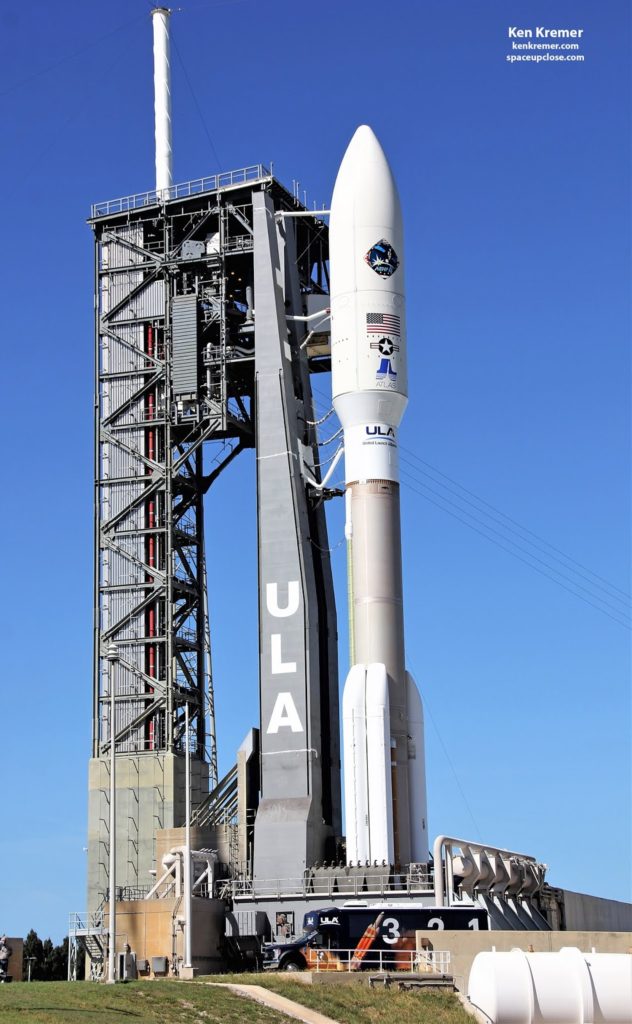 |
|
A United Launch Alliance Atlas V rocket carrying the AEHF-4 milcomsat for the U.S. Air Force is poised for liftoff to GTO on Oct. 17, 2018 from Space Launch Complex-41 on Cape Canaveral Air Force Station,
Florida on a national security mission. Credit: Ken Kremer/kenkremer.com/spaceupclose.com |
The problem is that ULA currently plans to roll out the Atlas V to pad 40 also on Tuesday morning, Aug. 6 and the 197 foot tall (60 m) rocket would be sitting exposed on pad 41 with no protection while SpaceX conducts a launch from nearby pad 40 Tuesday evening, roughly one mile south.
Thus the potential exists for cross contamination issues either from the rocket exhaust of a successful Falcon 9 launch or debris, pressure and temperature waves and toxic/corrosive chemical vapors in the unlikely event of an explosion from a failed Falcon 9 launch.
The cost of the Lockheed Martin built AEHF-5 satellite years in the making and critical for U.S. national security and our troops is about $1.8 Billion vs. a cost of about $250 million for AMOS-17 aimed at overseas commercial customers for broadband, phone and TV services.
The choice on priorities appears to be rather straightforward.
The prior satellite in the AEHF constellation namely AEHF-4 launched on a ULA Atlas 551 vehicle in Oct. 2018. See our Space UpClose photos.
AEHF-5 is the fifth in line of a jam-resistant six-satellite constellation vital for U.S. National Defense joining four others already in orbit.
On top of that the weather outlook is poor for Aug. 6 with
only a 40% chance of acceptable GO conditions for the SpaceX AMOS-17 launch.
Whereas on Aug. 8 the weather outlook is 70% GO for the ULA Atlas V.
The Air Force must decide soon by Monday Aug. 5 which way to go and which satellite will sail first to space.
ULA plans a Launch Readiness Review (LRR) on Monday including the Air Force to potentially help resolve the launch sequence issue.
ULA has reserved Aug. 8 and 9th on the range. Thus Aug. 10 might be the next opportunity for SpaceX and AMOS-17 to launch in case of a slip from Aug. 6 for any reason.
The Air Force has upgraded the Range to accommodate quick launch turnarounds in the same day spaced a minimum of at least 16 hours apart – in part by implementing the autonomous flight termination system (FTS) which would destroy a rocket flying off course.
But the FTS upgrade does not take into account the cross contamination issue.
The real possibility of back to back launches enabled by the Eastern Range upgrades arose last year also between SpaceX and ULA when the Atlas V was to launch the NASA-NOAA advanced GOES-S weather satellite.
Ultimately NASA-NOAA concerns for possible contamination of the GOES-S spectrometers and instruments resulted in a delay to the SpaceX launch.
The Boeing-built AMOS-17 satellite is owned and operated by the Israeli Tel Aviv-based telecom company Spacecom.
Fortunately, both static fire tests proceeded far better compared to the prior AMOS-6 satellite for Spacecom – which was destroyed in a catastrophic explosion just minutes before engine ignition during its static fire test when the payload was bolted on top of the Falcon 9.
Since that devastating explosion in Sept. 2016, SpaceX has avoided placing commercial payloads on top of the Falcon 9 during static fire test campaigns.
This particular Falcon 9 first stage previously launched twice on the Telstar-19 VANTAGE and Es’hail-2
missions in 2018 and has once again been refurbished for reuse.
But this launch will be its last launch says Spacecom.
For its third and final flight this Falcon 9 first stage booster will fly with no landing legs and
no grid fins.
Spacecom needs all the lifting power of the Falcon 9 rocket to achieve its intended orbit for the
heavy 6.5 ton AMOS-17 and maximize its lifetime in orbit.
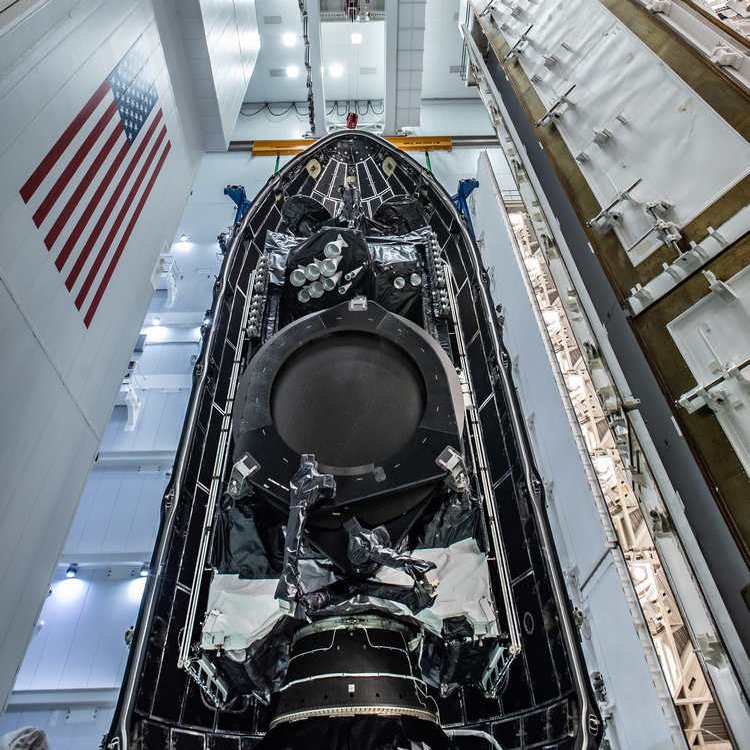 |
|
AMOS-17 geocomsat ready for encapsulation in
SpaceX Falcon 9 payload fairing. Credit: Spacecom/SpaceX |
AMOS-17 has a fully fueled weight of 6.5 metric tons (14,330 pounds).
Once in geostationary orbit AMOS-17 will be operating at 17 degrees east.
“AMOS-17 will expand and strengthen Spacecom’s coverage of the growing satellites services market in Africa, with connectivity to the Middle East, Europe and Asia. AMOS-17 will deliver Ka-band,
Ku-band and C-Band services,” according to Spacecom.
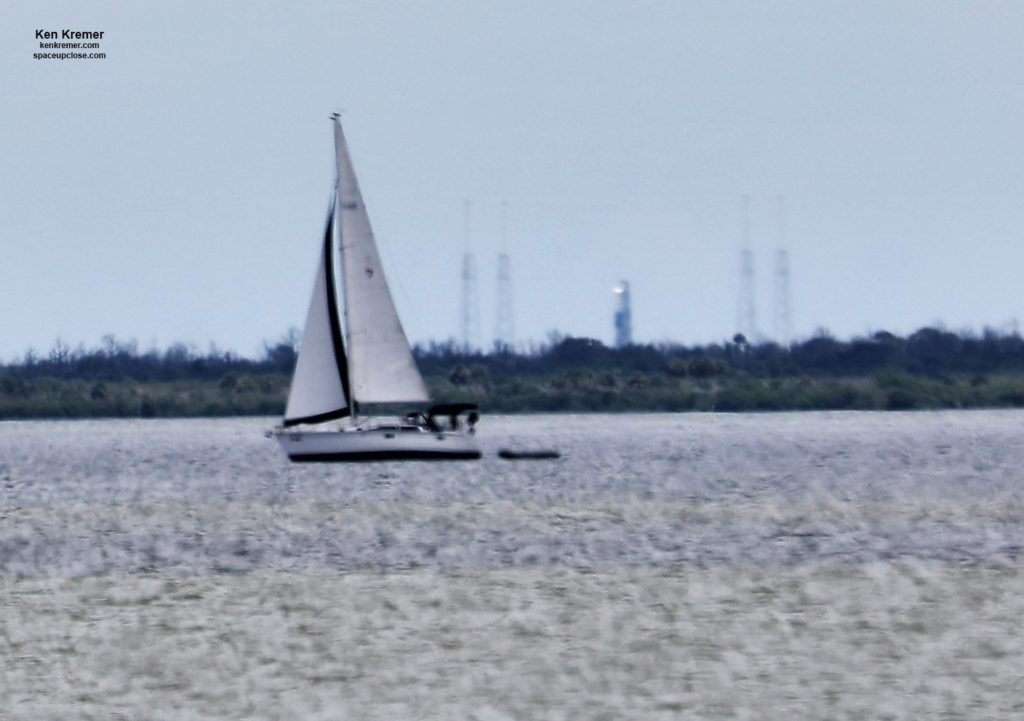 |
| Credit: Ken Kremer/kenkremer.com/spaceupclose.com |
Following the 2nd test fire the Falcon 9 booster was finally lowered back horizontal Sunday afternoon and returned to the hangar to attach the AMOS-17 payload pending a launch decision.
Stay tuned.
Ken will be onsite at the Cape Canaveral Air Force Station for live reporting of the SpaceX AMOS-17 mission launch.
Watch for Ken’s continuing onsite coverage of NASA, SpaceX, ULA, Boeing, Lockheed Martin,
Northrop Grumman and more space and mission reports direct from the Kennedy
Space Center, Cape Canaveral Air Force Station, Florida and Wallops Flight
Facility, Virginia.
Stay tuned here for Ken’s continuing Earth and Planetary science and human spaceflight news: www.kenkremer.com –www.spaceupclose.com – twitter
@ken_kremer – email: ken at kenkremer.com
Dr. Kremer is a research scientist and journalist based in the KSC area, active in outreach and interviewed regularly on TV and radio about space topics.
………….
Ken’s upcoming outreach events:
Aug 7: Quality Inn Kennedy Space Center, Titusville, FL, evenings. Learn more about the upcoming/recent SpaceX AMOS-17, SpaceX Falcon 9/CRS-18 launch
to ISS, NASA Orion Ascent-2 Abort test
Falcon Heavy, NASA 2024
Moon landing goal, SpaceX Starlink-1, SpaceX Demo-1 launch/test failure, SpaceX Beresheet launch, NASA missions, ULA Atlas & Delta launches,
Northrop Grumman Antares, SpySats and more
Ken will display his photos for sale
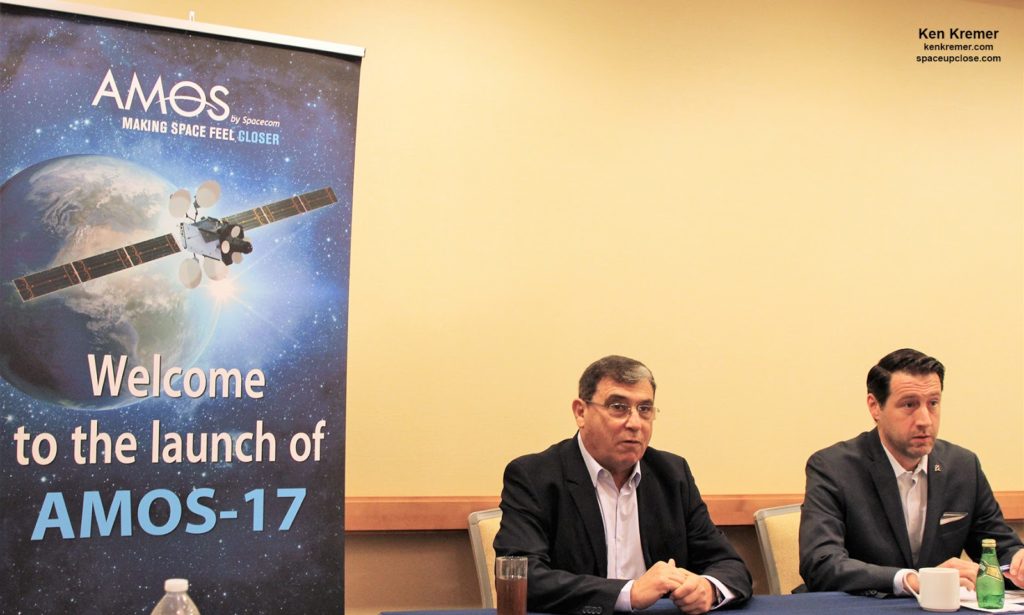 |
|
AMOS-17 prelaunch
media briefing Aug. 2, 2019 with David Pollack, Spacecom CEO; and Chris Johnson, Boeing President, Satellite Systems International. Credit: Ken Kremer/kenkremer.com/spaceupclose.com |



